Share the post "Body Types of Soccer Players (Build + Physique!)"
Soccer players come in many different physical forms. Generally, the tallest and heaviest players are goalkeepers, central defenders, and target man forwards. The shorter players tend to play in wide and attacking roles. However, there are many exceptions in every position.
What are the body types of soccer players? Soccer players are cardio machines; they’re slim and lean and tend to have muscular legs. Their average height approximates that of the average person, and their weight rarely exceeds 200 lbs for a man and 155 lbs for a woman.
This is mainly due to the physical demands and endurance of being a pro player. Playing the game of averages doesn’t have any relevance in soccer. Body types and physical characteristics are mere variables when it comes to the makeup of a player.
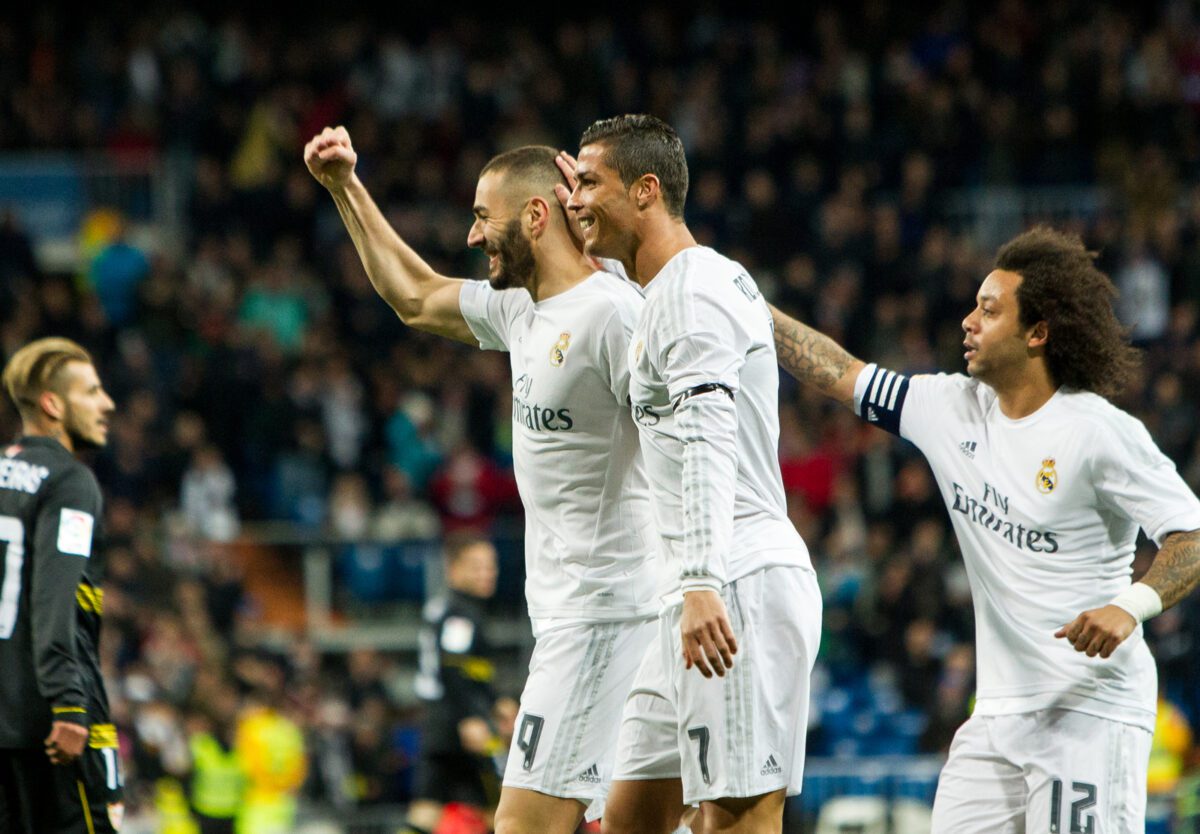
Scientifically speaking, there are 3 different body types:
- Ectomorphs
- Mesomorphs
- Endomorphs
Soccer players tend to fall into Ectomorphs and Mesomorphs, the most common body type. However, there are many examples of endomorphs in the game. Physical characteristics and body type contribute to players’ ability and suitability for certain positions, but they’re not definitive.
Throughout this article, we’ll study the different body types of soccer players, look into the types of bodies found in specific positions, and compare the best examples with outliers.
- Overview of Typical Body Types
- Body Types of Soccer Players
- How Body Types Affect a Player's Style
- What body type is best for soccer?
- Goalkeepers: Body Types
- Defenders: Body Types
- Center-Midfielders: Body Types
- Attackers: Body Types
- Variation of body types for soccer players
- Players Who Defy the Typical Body Type Stereotypes
- Tips and Exercises Develop Physical Attributes
Overview of Typical Body Types
Here is a table showing the typical height, average weight, and BMI for different soccer positions:
| Position | Average Height | Average Weight | Healthy BMI Range |
|---|---|---|---|
| Goalkeeper | 6’0″ – 6’5″ | 150 – 210 lbs | 20.3 – 24.9 |
| Center Back | 6’0″ – 6’5″ | 150 – 210 lbs | 20.3 – 24.9 |
| Full Back | 5’5″ – 6’2″ | 115 – 185 lbs | 19.1 – 23.8 |
| Midfielder | 5’5″ – 6’5″ | 120 – 200 lbs | 20.0 – 23.7 |
| Winger | 5’5″ – 6’2″ | 110 – 180 lbs | 18.3 – 23.1 |
| Forward | 5’5″ – 6’5″ | 110 – 200 lbs | 18.3 – 23.7 |
- Heights and weights can vary, but these are average guidelines.
- BMI is a measure of body fat based on height and weight.
- The healthy range allows for muscle mass variations between positions.
- Lighter weights may be ideal for skills-based roles that require agility.
- Taller, heavier builds can work for positions relying more on strength.
- Goalkeepers tend to be taller and have a larger frame for better reach and presence in goal.
- Defenders, especially center backs, are generally taller and well-built for physical duels and aerial challenges.
- Midfielders and wingers often have a more balanced physique, combining agility with endurance.
- Strikers can vary significantly, from taller, physically strong players to shorter, quicker forwards.
Maintaining a healthy BMI through diet and training is important for performance and injury prevention across all soccer positions.
Body Types of Soccer Players
Soccer players fall into various forms of the three general body type categories (somatotypes).
Ectomorph
An ectomorph is typically thin and long. They’re often tall, with lengthy limbs, small joints, and lean muscle. Their slighter frame doesn’t support much weight or muscle mass.
Mesomorph
A mesomorph is naturally athletic. Mesomorphs have broad chests and shoulders, a large bone structure, naturally muscular, and low body fat.
Endomorph
Endomorphs are of a shorter build. They’ve got a medium to large bone structure, with thick but short limbs. Endomorphs are usually strong but tend to gain weight/fat quickly.
How Body Types Affect a Player’s Style
Body types can significantly influence a player’s playing style and performance in soccer. The physical attributes of a player, such as height, weight, muscle composition, and overall physique, often play a role in determining their suitability for certain positions, their playing style, and how they perform on the field. Here’s a breakdown of how different body types can impact a player’s game:
1. Tall and Muscular Players
- Positions: Often suited for center-backs, target forwards, or goalkeepers.
- Playing Style:
- Excel in aerial duels and physical battles.
- Effective in set-piece situations, both defensively and offensively.
- Performance Impact:
- Strength helps in shielding the ball and in tackling.
- Height is advantageous for goalkeepers in reaching high shots and for strikers in heading.
2. Short and Agile Players
- Positions: Commonly seen in winger, attacking midfielder, or full-back roles.
- Playing Style:
- Quick turns and rapid changes in direction.
- Skillful dribbling and close ball control.
- Performance Impact:
- A low center of gravity aids in balance and agility.
- Easier to maneuver through tight spaces and opponents.
3. Lean and Endurance-Oriented Players
- Positions: Typically midfielders or box-to-box players.
- Playing Style:
- Capable of covering large portions of the field.
- Consistent performance throughout the game due to high stamina.
- Performance Impact:
- Endurance allows for sustained effort and recovery.
- Agility combined with stamina is ideal for pressing and quick transitions.
4. Fast and Explosive Players
- Positions: Often wingers, strikers, or attacking full-backs.
- Playing Style:
- Rely on speed to outrun opponents.
- Utilize explosive bursts for attacking or tracking back.
- Performance Impact:
- Speed is crucial for counter-attacks and breaking defensive lines.
- Explosiveness is useful for sudden sprints and quick reactions.
5. Stocky and Strong Players
- Positions: Can be central midfielders, defenders, or target forwards.
- Playing Style:
- Use physical strength to dominate in tackles and duels.
- Effective in holding up play and protecting the ball.
- Performance Impact:
- Physicality helps in winning and retaining possession.
- Can be imposing figures in both defensive and offensive scenarios.
While body type can influence a player’s style and performance, it’s important to note that soccer is a diverse sport where players of all shapes and sizes have found success. Technical skills, tactical understanding, mental strength, and adaptability often play a significant role as physical attributes.
Additionally, modern training and sports science allow players to maximize their physical potential and adapt to various roles on the field, regardless of their natural physique.
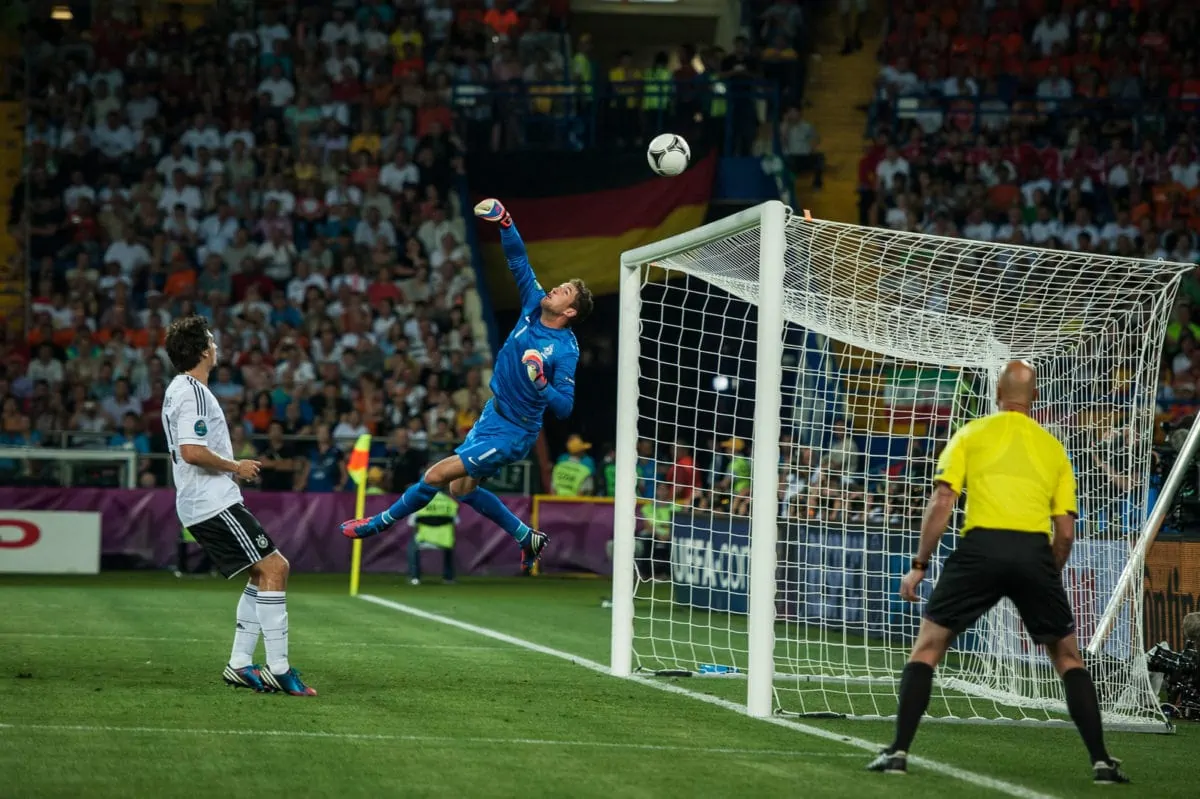
What body type is best for soccer?
Studies show that the majority of soccer players are either mesomorphs or ectomorphs. This is unsurprising, as soccer players tend to be good athletes with superior endurance. Due to their muscular makeup, mesomorphs are statistically at less risk of injury when performing athletically.
Notably, these categories are relatively loose, and players can have traits from various body types. Before we take a deep dive, here’s an overview of the general positions and duties:
- Goalkeepers: Reflexes, command of the area, and distribution skills.
- Defenders: Marking, heading, and the ability to play under pressure.
- Midfielders: Game management, transition play, and breaking lines with passes.
- Wingers: Speed in one-on-one situations, ability to deliver quality crosses, and versatility to switch flanks.
- Strikers: Clinical finishing, off-the-ball intelligence, and link-up playability.
How to Get a Body Like a Soccer Player
Soccer players train all aspects of their bodies to become more like pro players; you must train thrice weekly. Competitive matches push players to the limits. You’ll need to be in good shape before you play these matches.
Depending on your fitness, getting a body like a soccer player can take several months. Determination and dedication will make or break you. Soccer requires various muscles to be worked, so your training must be varied. Here is a selection of tools that will improve your body and monitoring.
Goalkeepers: Body Types
Goalkeepers are usually the tallest and heaviest players on the field. The tallest position in the 2018 World Cup was GK, and the average height was 6ft 2”. The tallest player in the tournament was Croatian GK, Lovre Kalinic, who’s 6ft 7”. The tallest player in the world currently is also a GK: Simon Bloch Jorgensen, who stands 6ft 10½”.
- The average weight of a GK at the 2018 World Cup was 184 lbs, almost 14 lbs heavier than the average player.
- For women, goalkeepers are also the tallest players. The average female GK stands at just under 5ft 10”.
- The body types of goalkeepers are mainly mesomorphs and endomorphs.
- Physical Characteristics: Height and reach are crucial for covering the goal area effectively. Good hand-eye coordination and reflexes are essential.
- Attributes: Agility, jumping ability, and strength to parry shots. Composure and decision-making skills are vital for shot-stopping and commanding the penalty area.
Defenders: Body Types
Center-backs are usually the tallest and heaviest players in a squad outside goalkeepers. Not known for their speed, CBs need to be physically strong to win aerial duels and command their defensive line.
In the 2018 World Cup, the average height for a defender was 6ft 1”, almost 2 inches taller than the average player. They also outweighed the average outfield player by 4lbs. The average height of a female soccer player is just under 5ft 6”. Like their male counterparts, female CBs tend to be heavier than outfield players, weighing 130 – 145 lbs.
- Physical Characteristics: Strength and height (especially for center-backs) to win aerial duels and physical battles. Speed and stamina are more critical for full-backs.
- Attributes: Tactical understanding, positioning, and the ability to read the game. Good tackling and intercepting skills. Full-backs also need dribbling and crossing abilities.
Center-Midfielders: Body Types
The center midfield position is interesting when it comes to body types. The modern game has various CM roles, played differently by athletes of varying shapes and sizes. Some of these roles are suited to the short and stocky hatchet builds, while others are suited to the long-legged, gut-busting, box-to-box style midfielders.
- Physical Characteristics: Stamina and endurance to cover large areas of the pitch. Balance and agility are important for quick turns and movements.
- Attributes: Ball control, passing accuracy, and vision. Defensive midfielders need tackling and interception skills, while attacking midfielders require creativity and dribbling skills.
Let’s take a look at a few of these roles:
Defensive Midfielder – No. 6
The number 6 was historically the defensive-minded player in a midfield two. These days, defensive midfielders operate in many different styles and are often deployed to play the position solo.
In some instances, the CDM is of a relatively stocky shape. They’re the front line of defense and throw themselves into challenges, giving everything to their team. Their role includes reading the opposition’s attack, tackling, marking, intercepting, and covering. Not known to be tall, they often fill the endomorph category.
This type of player is naturally strong and physically durable. Claude Makelele (Real Madrid, Chelsea & PSG) revolutionized this position and is the best example of this type of player. Other great examples are Javier Mascherano, Gennaro Gattuso, Lucas Torreira, and Fernandinho.
Another form of a defensive midfielder is best described using a player example: Sergio Busquets, the perfect modern defensive midfielder. Players of this type are long, lean, strong athletes capable of covering distances, making physical challenges, and having elite tactical and positional ability.
They’re somewhat of a hybrid between ectomorph and mesomorph. Many stand well over 6ft and don’t look very strong but carry lean muscle and strength on their slender frame.
Examples of this type of CDM are;
- Nemanja Matic (6ft 4”)
- Fabinho (6ft 2”)
- Casemiro (6ft 1”)
- Frenkie De Jong (5ft 11”)
Deep-lying playmakers occupy defensive positions on the field but are usually free of significant defensive duties. They’ve got a phenomenal passing range and fantastic vision. It’s common to see this type of role filled by a player of slight build. Their height varies, but often their strength and physicality are lacking. This type of player is Pirlo, Xavi, Jorginho, and Xabi Alonso.
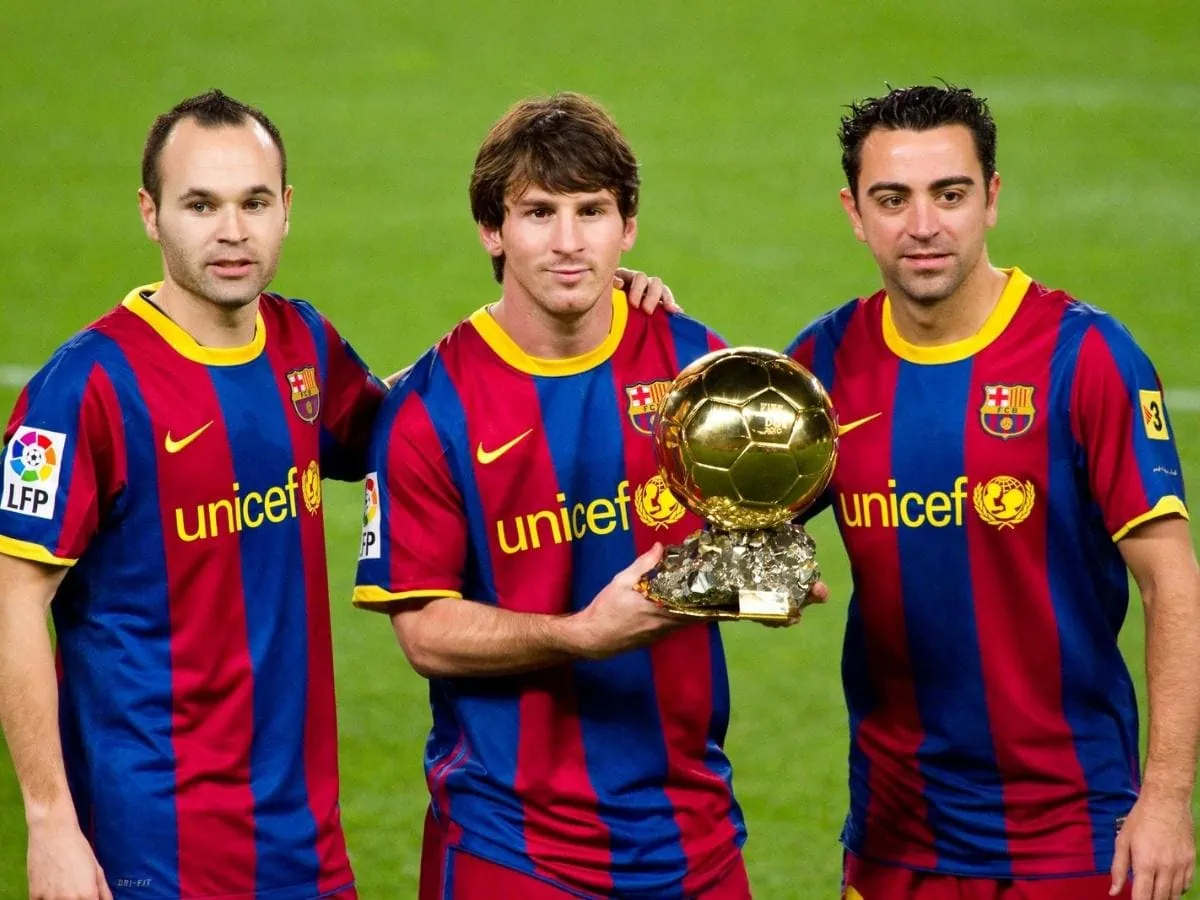
Attacking Midfielder
The number 8 is usually the more attacking-minded of a midfield pair or a box-to-box style player. They cover the most distance in a game. Their fitness and stamina levels are through the roof.
Therefore, they’re often the lightest and leanest players. In the 2018 World Cup, the average midfield player weighed 163 lbs, 5 lbs lighter than the average outfield player. Heightwise, this type of midfielder exemplifies the size variance in the sport. For example, here are some of the most notable midfielders of this type in recent times
Best midfielders and their heights
- N’Golo Kante (5ft 6”)
- Roy Keane (5ft 10”)
- Arturo Vidal (5ft 11”)
- Steven Gerrard (6ft)
- Bastian Schweinsteiger (6ft)
- Yaya Touré (6ft 2”)
- Patrick Vieira (6ft 4”)
The stylistic approach from a manager or the player’s overall skill set can have more of an influence on the game than size.
- Physical Characteristics: Pace and agility to outrun opponents and make quick, sharp movements.
- Attributes: Dribbling skills, crossing ability, and the capacity to cut inside and shoot. Good off-the-ball movement to create space and opportunities.
Attackers: Body Types
Forwards
Like with certain midfield positions, attackers’ sizes can vary significantly. Advanced playmakers, center-forwards, and wingers are frequently short and quick, with low centers of gravity. They’re light to be able to dribble, pass, and move quickly in the opposition third but tend to have good core strength. The typical physical build of such a player is that of;
- Lionel Messi
- Paulo Dybala
- David Silva
- Sadio Mane
- Eden Hazard
However, several tall, powerful, fast, and skillful athletes play attacking roles. These are the outliers. Such players can run like gazelles, turn on a sixpence, compete physically with defenders, make pin-point crosses, and score goals. These physically gifted players almost always fall into the mesomorph category as pure natural athletes. Perhaps the best example of this would be;
- Cristiano Ronaldo (6ft 2″)
- Gareth Bale (6ft 1”)
- Thierry Henry (6ft 2”)
- Ivan Perisic (6ft 1”)
- Marcus Rashford (6ft)
- Physical Characteristics: Speed and strength to hold off defenders. Height can be an advantage for aerial threats.
- Attributes: Finishing skills, composure in front of goal, and the ability to make intelligent runs. Good ball control and the ability to shield the ball from defenders.
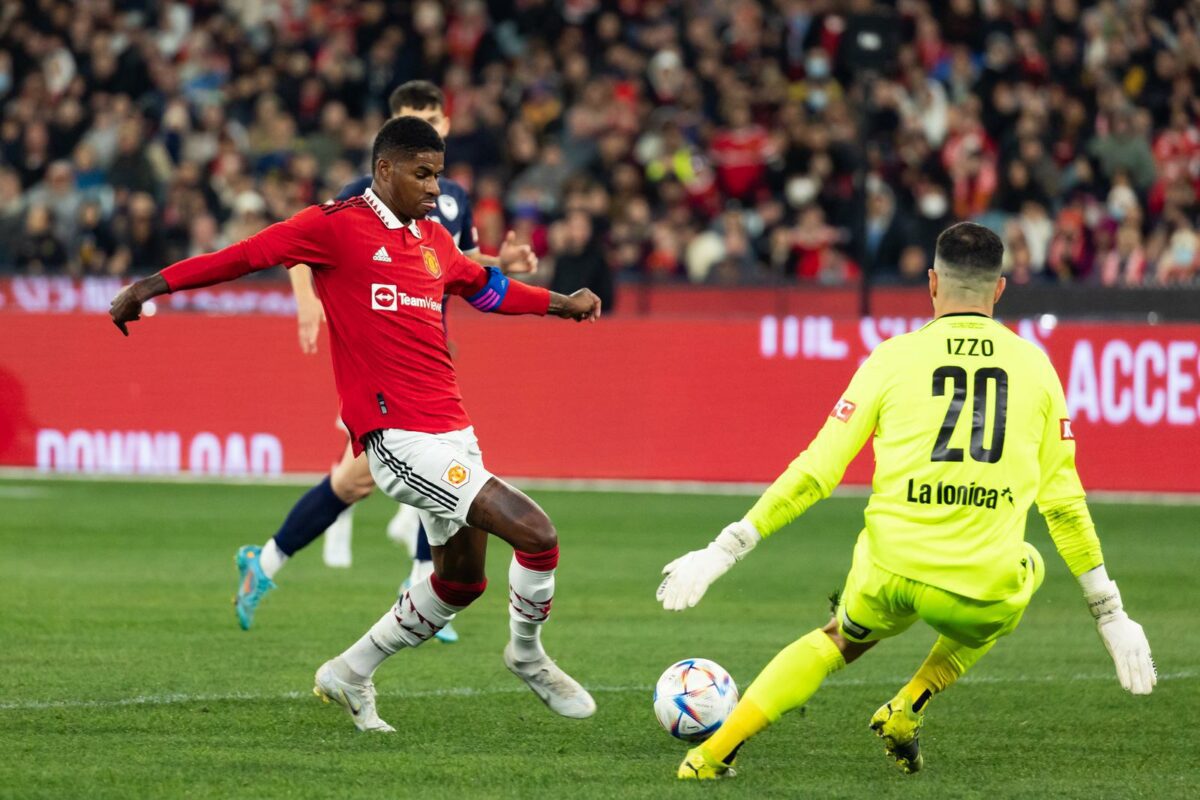
Strikers
The number 9 or striker position can have the most considerable contrast regarding body type. On one end of the scale, we’ve targeted men such as Romelu Lukaku and Zlatan Ibrahimovic – 6ft 3” and 6ft 5” respectively, weighing over 200lbs.
These powerhouses share the physical stats of GKs and CBs while possessing an attacker’s skill and athleticism. On the other end of the scale, we can look at players like Sergio Aguero and Wayne Rooney. Both fall into the endomorphic category with their stocky builds.
Neither are “typically” athletic, but both possess superior strength and balance, complementing their unique skill sets and adding to their effectiveness on the field. Many more strikers fall somewhere between a Zlatan and an Aguero.
- Physical Characteristics: Speed and strength to hold off defenders. Height can be an advantage for aerial threats.
- Attributes: Finishing skills, composure in front of goal, and the ability to make intelligent runs. Good ball control and the ability to shield the ball from defenders.
Variation of body types for soccer players
Interestingly, the 2018 World Cup statistics showed that although height and weight varied between positions, players’ BMI levels were about even across the board (23.2). Female pros tend to have a slightly lower BMI (22.4). Athletes play soccer with different body types but are most definitely in peak physical condition.
Ronaldo and Messi are undoubtedly their generation’s best players if not all time. Their goalscoring feats, as well as their teams’ successes, have been breathtaking. One of the most exciting aspects is how different both players are physically and stylistically, even though they fill similar roles.
Ronaldo, at 6ft 2”, 185lbs, is built like a Greek God, while Messi, although athletic and lightning-quick, at 5ft 7”, 158lbs, could easily pass as your local barista. There is no average body type in soccer. Some might argue that there is an optimal type for a position, but then there are always exceptions (and lots of them). As a game anyone can play, there’s no wonder that soccer is the most popular sport in the world.
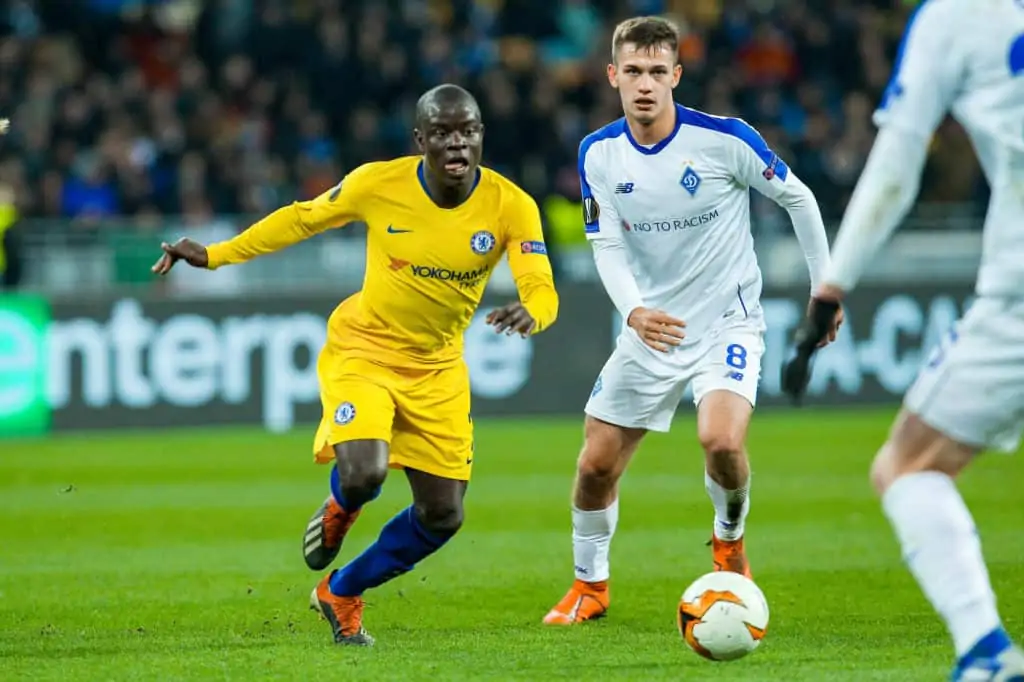
Players Who Defy the Typical Body Type Stereotypes
While certain physical attributes are often associated with specific positions, there are numerous examples of famous players who have defied these typical body type stereotypes, showcasing that skill, intelligence, and technique can often outweigh physical predispositions. Here are some notable examples:
1. Lionel Messi (Forward)
- Defying Stereotype: Despite being shorter than the typical forward (5’7″ or 170 cm), Messi’s low center of gravity, agility, and exceptional dribbling skills have made him one of the greatest forwards in soccer history.
2. Peter Crouch (Striker)
- Defying Stereotype: Standing 6’7″ (201 cm), Crouch was much taller than the average striker. His height was an advantage in aerial duels, but he also possessed surprisingly good feet for a player of his stature.
3. N’Golo Kanté (Midfielder)
- Defying Stereotype: Kanté, known for his small stature (5’6″ or 168 cm), has exceptional endurance and tackling ability, making him one of the best defensive midfielders despite not having the physical presence typically associated with the role.
4. Andrés Iniesta (Midfielder)
- Defying Stereotype: Iniesta wasn’t the fastest or the most muscular midfielder, but his exceptional vision, ball control, and intelligence made him one of the best central midfielders in the world.
5. Fabio Cannavaro (Defender)
- Defying Stereotype: At 5’9″ (175 cm), Cannavaro was shorter than most central defenders. However, his excellent reading of the game, tackling, and aerial ability compensated for his lack of height.
6. Iker Casillas (Goalkeeper)
- Defying Stereotype: Standing at 6’1″ (185 cm), Casillas was considered short for a goalkeeper. Yet, his incredible reflexes, shot-stopping ability, and leadership made him one of the best goalkeepers of his generation.
7. Franco Baresi (Defender)
- Defying Stereotype: Baresi was relatively small for a defender (5’9″ or 175 cm), but his tactical intelligence, reading of the game, and technical ability made him a legendary figure in Italian football.
8. Xavi Hernandez (Midfielder)
- Defying Stereotype: Not particularly fast or physically imposing, Xavi’s game was built on extraordinary vision, precise passing, and tactical awareness, making him a midfield maestro.
9. N’Golo Kanté (Midfielder)
- At 5’6″, Kanté is one of the shortest midfielders in top football. Yet his incredible work rate and tackling ability allowed him to star in central midfield for Leicester and Chelsea.
10. Dani Alves (Defender)
- Alves is known more for his speed and attacking instincts, yet he had a stellar career at right back for Barcelona, Juventus, and Brazil due to his technical skills. At 5’8″, he’s smaller than traditional defenders.
11. Edwin van der Sar (Goalkeeper)
- At 6’5″, van der Sar was taller than the average goalkeeper. However, his excellent footwork, distribution, and agility allowed him to thrive as a “sweeper keeper” who came way off his line, defying positional norms.
12. Olivier Giroud (Striker)
- Giroud succeeded with his strength and hold-up play despite being a relatively slow, tall target forward at 6’4″, going against the stereotypical poacher archetype.
These players demonstrate that while physical attributes can be advantageous in soccer, they are not the sole determinants of success. Skills like technical ability, tactical intelligence, mental toughness, and a strong work ethic are equally, if not more, important in reaching the highest levels of the game. Their careers are a testament to the fact that soccer is a sport where diverse physical attributes can find a place and excel.
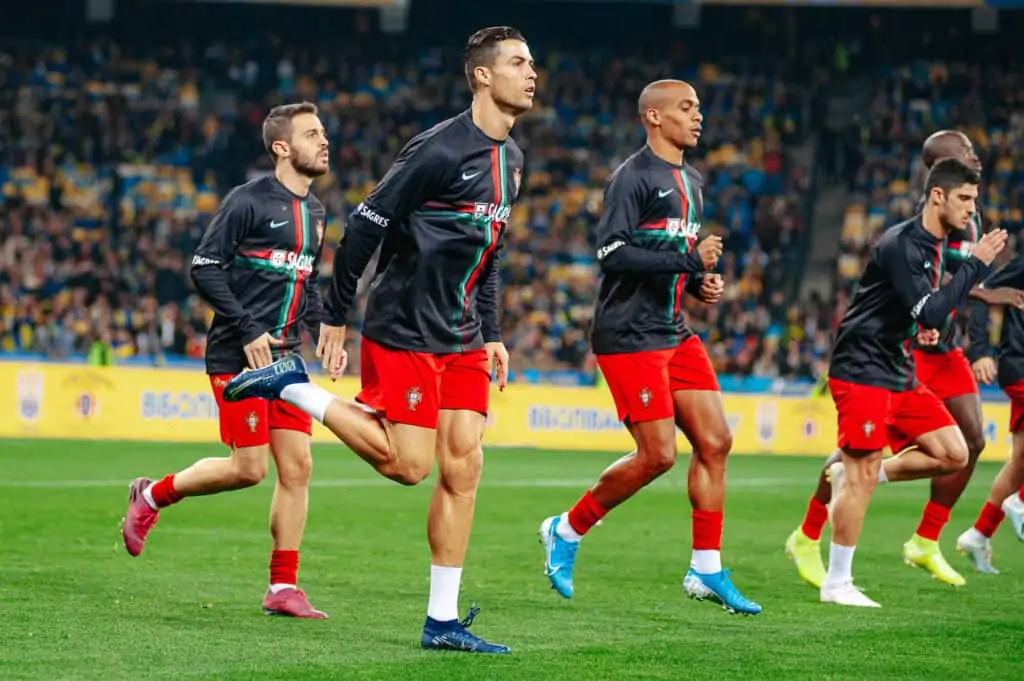
Tips and Exercises Develop Physical Attributes
Developing physical attributes and body types for specific soccer positions involves targeted exercises and training routines. Here are tips and exercises for players looking to enhance their physical capabilities for different positions:
1. Goalkeepers
- Exercises:
- Plyometric drills for explosive power and agility (e.g., box jumps, lateral hops).
- Hand-eye coordination drills (e.g., catching and throwing exercises).
- Core strengthening exercises for stability (e.g., planks, Russian twists).
- Tips:
- Practice reaction drills regularly.
- Work on flexibility and stretching to improve reach and prevent injuries.
2. Defenders
- Exercises:
- Strength training for upper and lower body (e.g., squats, deadlifts, bench press).
- Speed and agility drills (e.g., cone drills, shuttle runs).
- Jumping exercises for aerial duels (e.g., vertical and broad jumps).
- Tips:
- Focus on positional play and tactical awareness.
- Practice one-on-one defending and tackling techniques.
3. Midfielders
- Exercises:
- Endurance training (e.g., long-distance running, interval training).
- Ball control drills (e.g., dribbling courses, passing accuracy exercises).
- Core and leg strength exercises (e.g., lunges, bicycle kicks).
- Tips:
- Develop a good understanding of game tactics and spatial awareness.
- Work on quick decision-making skills and vision.
4. Wingers
- Exercises:
- Speed training (e.g., sprints, resistance running).
- Agility drills (e.g., zig-zag runs, ladder drills).
- Ball skills exercises focusing on dribbling and crossing.
- Tips:
- Practice one-on-one attacking scenarios.
- Work on accurate crossing and cutting inside to shoot.
5. Strikers/Forwards
- Exercises:
- Explosive power drills (e.g., plyometrics, sprint intervals).
- Finishing drills (e.g., shooting from various angles, one-touch finishes).
- Strength exercises (e.g., kettlebell swings, push-ups).
- Tips:
- Focus on positioning and movement off the ball.
- Regularly practice different types of finishing techniques.
General Tips for All Positions
- Nutrition: Maintain a balanced diet to support physical development and recovery.
- Recovery: Prioritize rest and recovery, including adequate sleep and active recovery days.
- Flexibility: Incorporate stretching and flexibility exercises to prevent injuries.
- Mental Toughness: Develop resilience and focus, as mental strength is crucial in soccer.
Tailoring your training to develop the physical attributes required for your position is key in soccer. This involves a combination of strength, endurance, agility, and skill-specific exercises. Consistency, proper nutrition, and recovery are vital to any successful training regimen. Remember, while physical attributes are important, technical skills, tactical understanding, and mental toughness are equally crucial in soccer.
Boost your body type with a home gym that will give you that extra muscle:
- 【Professional】More than 20 years of professional fitness…
- 【High Quality Thick Steel】The frame and weight guards of…
- 【New design】 Leg exercise pedal can exercise more leg…
- 【Professional service】No matter how long it takes, we…
- 【Easy Installation】The detailed installation…
- NEW UPGRADED DESIGN — Enjoy efficient training right in…
- ADJUSTABLE 138LBS WEIGHT STACK — SunHome Home Gym System…
- ALL IN ONE — This home gym station can support many…
- DUAL ACTION PRESS ARMS- The workout station equipped with a…
- HEAVY-DUTY CONSTRUCTION — SunHome workout station is…
- 【Stability & Versatile Workout】This two-in-one leg press…
- 【Comfort & Smooth Exercise Experience】This leg press and…
- 【Safety & Considerate Design】The weight carriage fits…
- 【Multiple Adjustments】As a well-crafted design, there…
- 【Separate Package】Our leg press and hack squat machine…
Product: Updated 2024-07-24 | Images: Amazon Product Advertising API | #ad – soccerblade.com is an Amazon Associate
Related Questions
What’s The Average Weight Of A Soccer Player?
How Fit Do Soccer Players Have To Be?
Pro soccer players require an elite level of fitness. Their cardiovascular levels are very high. They run the most distance per game in all ball sports (7 miles on average).
Who’s The Heaviest Soccer Player In The World?
The heaviest player in the world currently is Englishman Adebayo Akinfenwa, who plays for Wycombe Wanderers F.C. He weighs 227lbs.
Share the post "Body Types of Soccer Players (Build + Physique!)"
Joel is a seasoned soccer journalist and analyst with many years of experience in the field. Joel specializes in game analysis, player profiles, transfer news, and has a keen eye for the tactical nuances of the game. He played at various levels in the game and coached teams - he is happy to share his insight with you.






